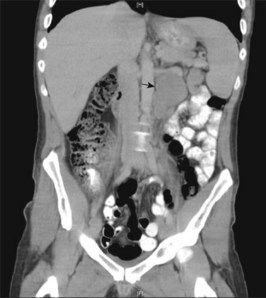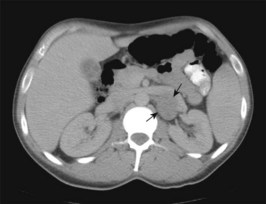Problem 8 A scrotal swelling in a 27-year-old man
You arrange an urgent ultrasound of the abdomen and testis as well as baseline bloods investigations and testicular tumour markers. In addition, and because of the abdominal findings, you arrange a CT of the chest and abdomen (Figures 8.1, 8.2). The haematological and biochemical values are within normal limits. The tumour marker and imaging studies are shown.
Investigation 8.1 Summary results
| LDH | 922 IU/L | (50–280) |
| AFP | 3 µg/L | (<11) |
| HCG | 7 IU/L | (<5) |





